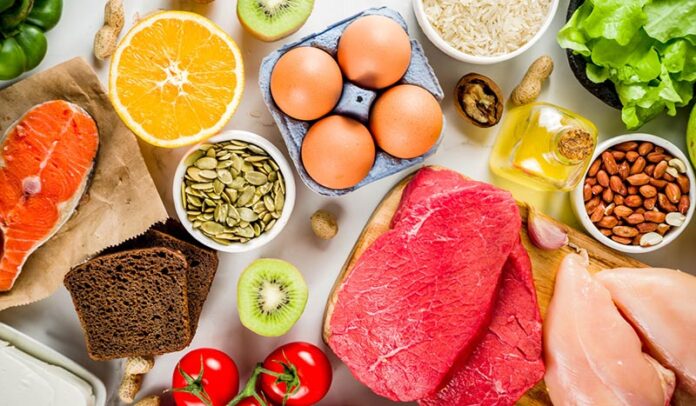Certain types of food have been found to be responsible for the digestive discomfort that people feel after having those foods, including feelings of bloatedness, gas formation, abdominal pain, diarrhea constipation, and irritable bowel syndrome (IBS).
Studies show that digestive enzymes, which normally help to break down and digest food in our body, find it difficult to break down certain types of carbohydrates, including starches, sugars and fibers in foods.
The undigested carbohydrates then move down to the far end of the intestine, where beneficial bacteria present there ferment them, while also drawing additional fluid into the stomach. The combination of additional fluid and increased gas from the fermentation process can slow digestion, and result in gas, bloating, pain, or diarrhea in people sensitive to these foods.
These indigestible short-chain carbohydrates are collectively known by their acronym, FODMAP, which is short for Fermentable Oligosaccharides, Disaccharides, Monosaccharides And Polyols. The monosaccharides in the acronym, also called simple sugars, are the simplest forms of sugar and form the building block for all carbohydrates.
Examples include glucose, fructose and galactose. Disaccharides, which include simple sugars such as sucrose, lactose and maltose, are formed by combining two monosaccharides. Oligosaccharides in turn are polymers formed from combining multiple monosaccharides, and polyols are organic compounds usually derived from simple sugars.
Although not everyone has a sensitivity to FODMAPs, it is very common among people with irritable bowel syndrome (IBS). In people who have digestive disorders, a diet of foods low in FODMAP has brought relief. Studies have shown that 3 out of 4 people with IBS saw fewer symptoms right away with the most relief after a week of eating a low FODMAP diet. A low FODMAP diet may also help those suffering from food intolerance, which is a common cause of digestive symptoms such as bloating, gas, and abdominal pain.
A low FODMAP diet may also be beneficial for other functional gastrointestinal disorders (FGID), a term that encompasses various digestive concerns. It may also cause positive psychological benefits, as these digestive disturbances are known to cause stress and are strongly linked to mental disorders like anxiety and depression
Common FODMAPs include:
Fructose: a simple sugar, which is found in table sugar and most added sugars, is also present in many sweet fruits and vegetables, including apples pears, mangoes, watermelon, as well as in honey, agave and high-fructose corn syrup
Lactose: a carbohydrate found in dairy products like milk, yogurt, custard, icecream
Fructans: found in many foods, including grains like wheat, spelt, rye and barley, as well as in asparagus, broccoli, cabbage, onions, garlic
Galactans: found in large amounts in legumes such as beans (including baked beans), lentils, chickpeas, and soybeans
Polyols: sugar alcohols like xylitol, sorbitol, maltitol, and mannitol. They are found in some fruits and vegetables and often used as sweeteners
For people wanting to try out a low FODMAP diet, there are a wide variety of healthy and nutritious foods available, including:
- Meats, fish, and eggs are well tolerated by people sensitive to FODMAP, unless high FODMAP ingredients, like wheat or high fructose corn syrup, are added to them.
- All fats and oils, most herbs and spices.
- Nuts and seeds,including peanuts, macadamia nuts, pine nuts, and sesame seeds but not pistachios, almonds, or cashews, which are high in FODMAPs
- Fruits, such as: unripe bananas, cantaloupe, grapefruit, kiwi, lemons, lime, mandarins, melons (except watermelon), oranges, passionfruit, strawberries Sweeteners such as maple syrup and stevia
- Dairy products if they are lactose-free, as well as hard cheeses and aged softer varieties like Brie and Camembert
- Vegetables, such as: alfalfa, bell peppers, bok choy, carrots, celery, chives, cucumbers, eggplant, ginger, green beans, kale, lettuce, olives, parsnips, potatoes, radishes, spinach, spring onion (only green), squash, sweet potatoes, tomatoes, turnips, water chestnuts, yams, zucchini,
Grains such as: corn, oats, quinoa, rice, sorghum, tapioca - Beverages, water, coffee, green, black, or white tea, etc.
Before starting out on a low FODMAP diet remember that the above list is not definitive or exhaustive. Moreover, everyone is different. You may tolerate some foods on the list of foods to avoid while noticing digestive symptoms from foods low in FODMAPs for other reasons. It is not surprising, then, that how much of a food you eat will affect how likely you are to experience symptoms if you have IBS. The individual tolerance to FODMAPs varies.
Since many commonly consumed foods are high in FODMAPs, it is generally recommended to completely eliminate all high FODMAP foods for a few weeks. Eliminating only some high FODMAP foods but not others is unlikely to work. If FODMAPs are the cause of your problems, you may experience relief in as little as a few days. After three weeks, you can reintroduce some of these foods — one at a time. This allows you to determine which food causes your symptoms. If you find that a certain type of food strongly upsets your digestion, you may want to permanently avoid it.
Also keep in mind that many foods that contain FODMAPs are considered very healthy, and some FODMAPs function like healthy prebiotic fibers that support your friendly gut bacteria. So, people who can tolerate these types of carbs should not avoid them. Though a low FODMAP diet may not eliminate all digestive problems, chances are high that it may lead to significant improvements.

















